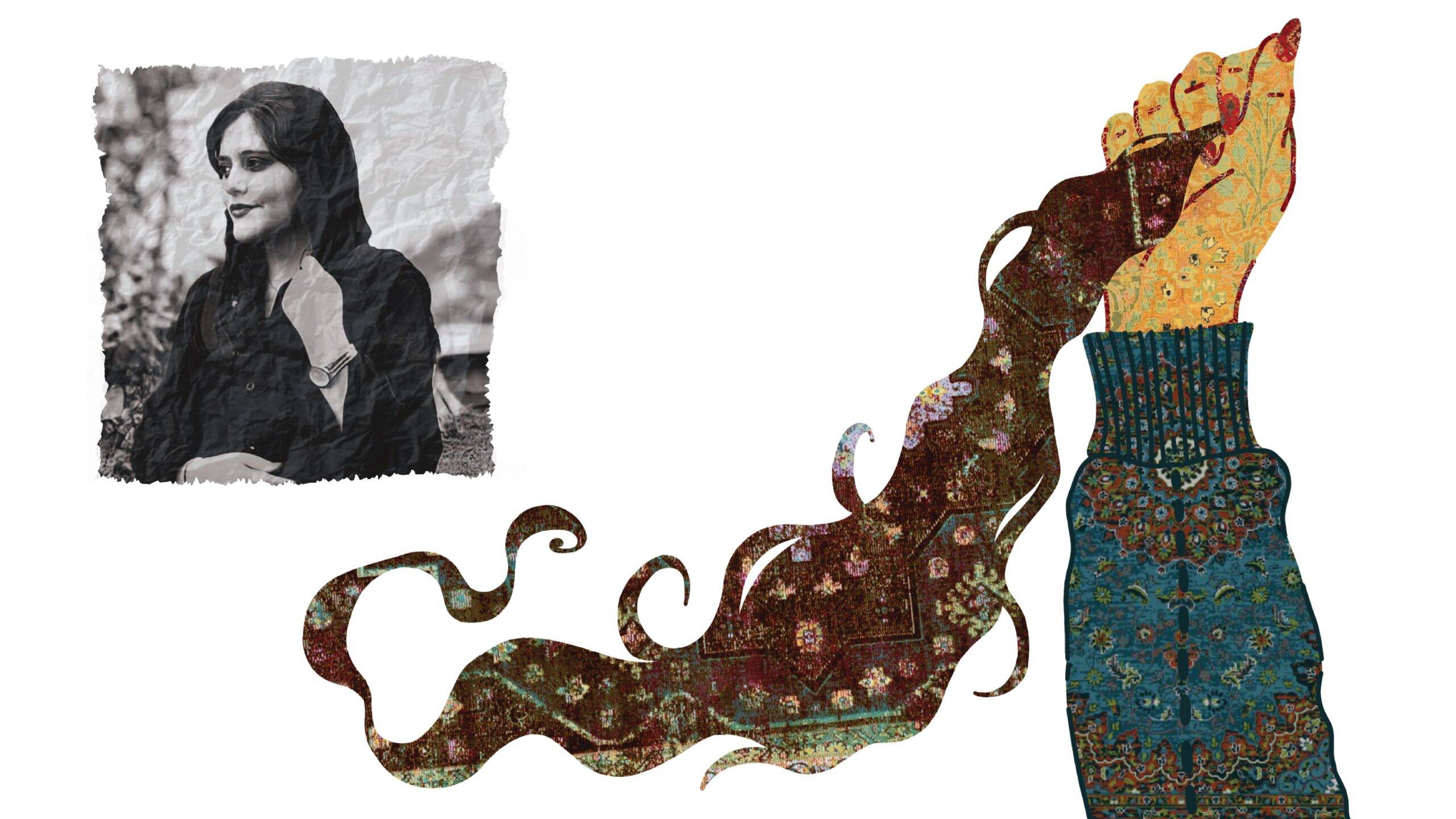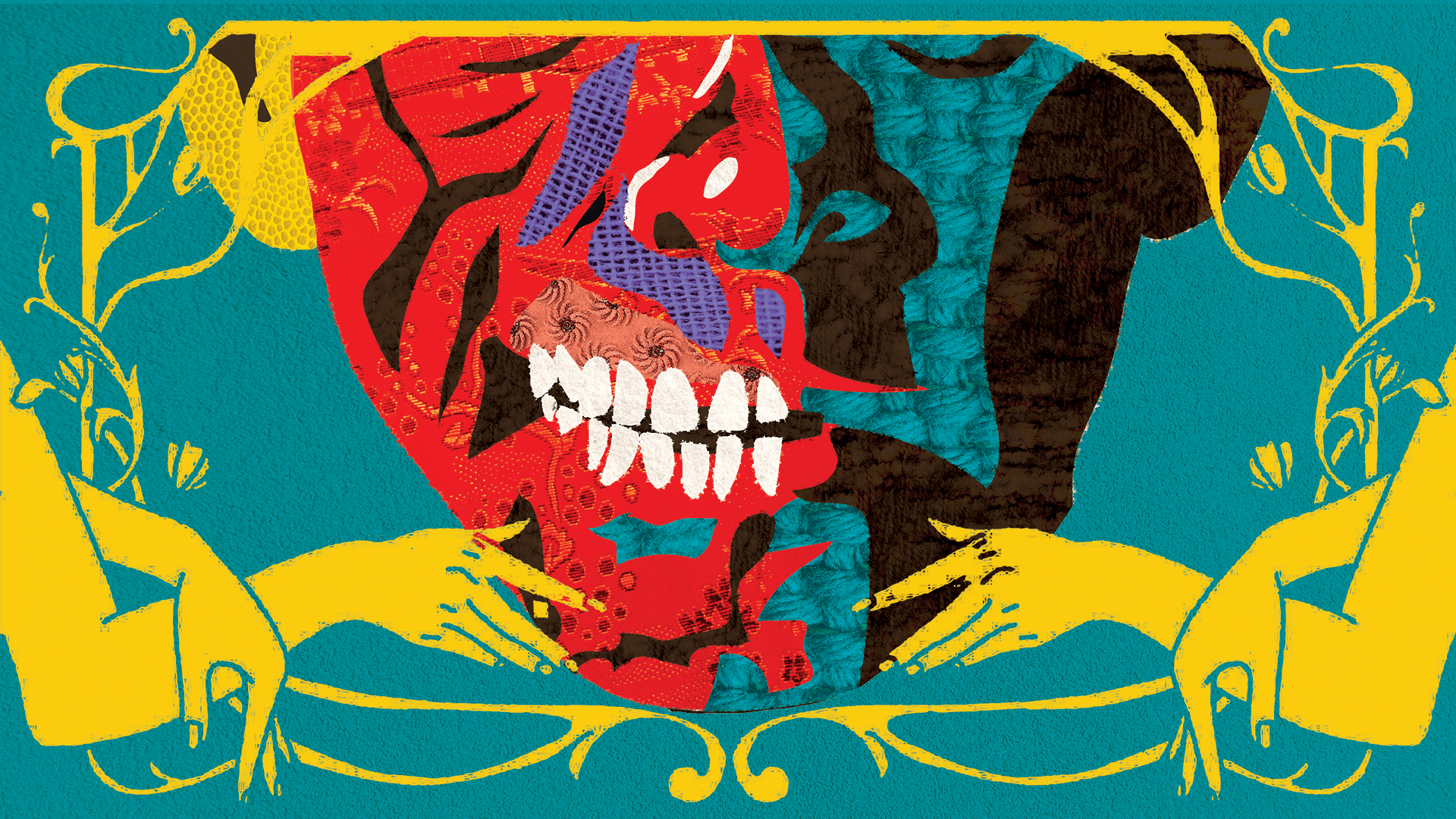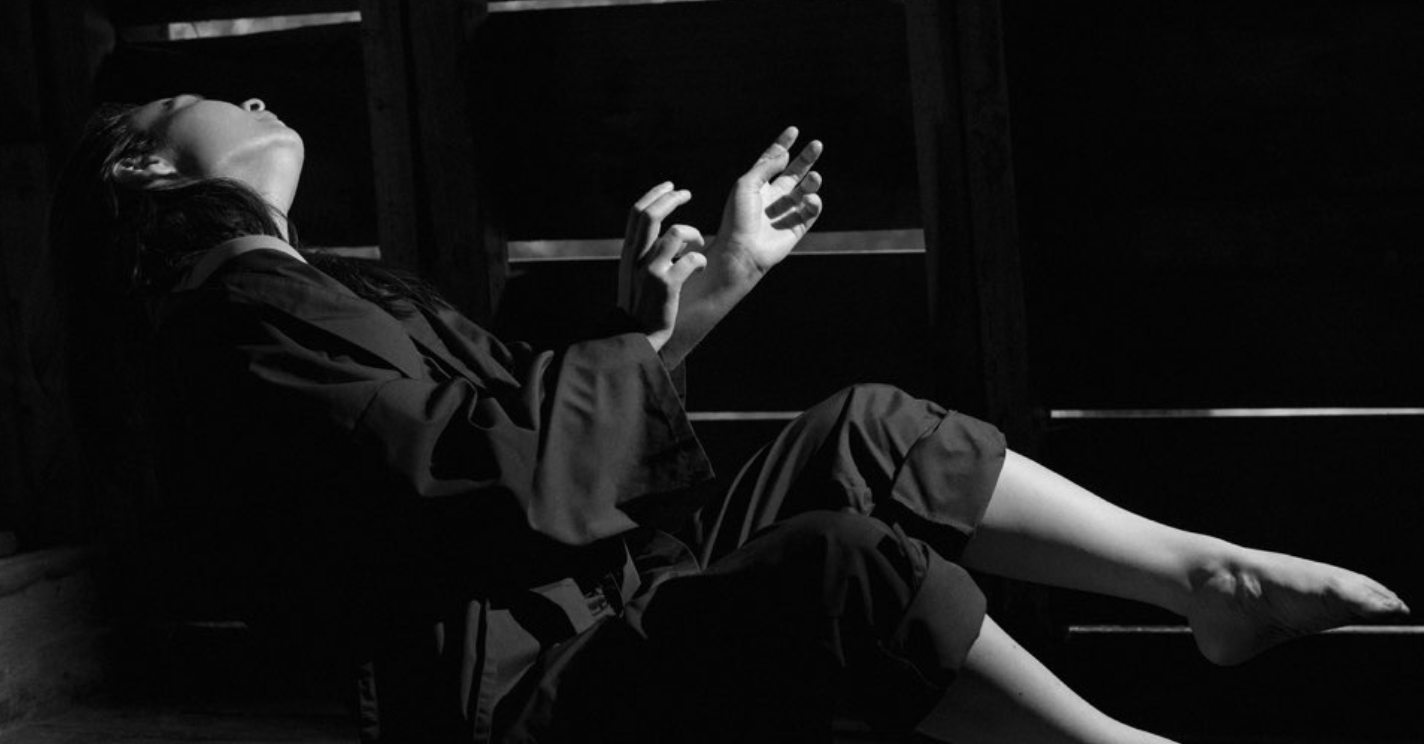
The author of this essay, a graduate student at SAIC, has decided to stay anonymous for security reasons.
A bloody year has passed in Iran. Still, the broken hearts of Iranians worldwide seek the white flags of justice, and the breathtaking moment of a fair trial to condemn the murderers of Mahsa Amini, a 22-year-old girl. Amini was killed in the custody of Guidance Patrol, a vice squad in the law enforcement command of the Islamic Republic of Iran which arrests Iranian girls who resist wearing hijab to cover their hair, and body.
As I write this essay, the Iranian community living in Chicago is gathering around Buckingham Fountain to protest against the tyrannical government, and leader of the Islamic Republic. Despite their opposing ideologies, contradictory alternatives, and different dreams for the future of Iran, they have seemingly achieved a civil alliance.
The community in Chicago all demonstrates by means of chanting a slogan: “Woman, Life, Freedom.” It is indeed the most progressive, and radical slogan in the trajectory of contemporary movements in Iran, and after decades of failures, and triumphs along the road of feminist battles against patriarchy, reaching this point makes the historical moment astonishingly brilliant.
Far from the Windy City Iranian citizens report the congestion created by military forces, funded by authorities of the Islamic Republic in order to maintain a status quo in Iran. According to the Human Rights Activists News Agency, security officers have executed, and murdered almost 500 civilians, and arrested numerous innocent activists, and journalists during last year’s protests. The tyrannical forces are still scared of the possibility of a revolution even though the nation has temporarily ceased to rally within the country’s borders. In addition, the reports, and images depicting the catastrophic murders, and proclamations articulating the necessity of change are continuously censored.
However, women in Iran continue to resist, and manifest their dissatisfaction by refusing to wear hijab in daily life. Alongside their brothers, partners, fathers, and husbands, Iranian women dream of ultimate freedom, and live within the dream as autonomous, resilient, and irrepressible citizens whose bodies should not be the battlefields, and whose bodies are the battlefields.
Accordingly, philosophers refuse to represent the movement as a banal activity belonging to an underdeveloped country.
Slavoj Zizek, professor of philosophy at the European Graduate School writes: “We in the West have no right to treat Iran as a country that is desperately trying to catch up with us. Rather, it is we who must learn from Iranians if we are going to have any chance of confronting right-wing violence and oppression in the United States, Hungary, Poland, Russia, and many other countries.”
In order to understand, and highlight the importance of this movement one should hear firsthand from those who are actively rallying, and protesting. In this vain I have interviewed two Iranian protesters — who prefer to stay anonymous for means of their security. The first is S, a 24-year-old girl who is a first year graduate student at SAIC, and the second is M, a 27-year-old man who is an art student living in Tehran.
S shared with me what she has suffered and the future she dreams of for Iran. M believes that protests for women’s rights are entangled with struggles to achieve the freedom of men, and gender non-conforming people as well.
Describe the day you found out about the death of Mahsa Amini.
S: I was at home, sitting on a comfortable chair and taking care of my assignments for a university course. I got the news on Instagram. Niloufar Hamedi, the reporter still detained in the regime’s prison, had taken and shared some touching photos of Mahsa Amini on the hospital bed and her grieving parents. One thing led to another, and I finally found myself hugging my mom, and we both burst out crying.
M: My friends and I were hanging out. Dining and laughing without particular sorrow. But we were suddenly shocked by the news of her death. My girlfriend just informed us of the mind-blowing murder. However, the authorities did not declare their responsibility. We discussed the necessity of rallying. Still, we did not see the possibility of widespread protests on that very day. We thought the nation’s reaction to this criminality would always be silent.
What makes Mahsa Amini’s death tragic in your eyes?
S: Being murdered to have a minimum of freedom … It is unfair that people get killed because of their outfits, which is a prominent human right.
M: Mahsa’s death made everyone discover their lost rights. The forces killed hundreds of protesters to keep everyone silent. There were children among the murdered people. Most of them were shot by military guns … I still cannot believe the brutality of the soldiers.
Describe the first day you decided to join the protesters.
S: It was the first of October, I guess. Some days before that, Hamed Esmaielion, an Iranian social activist, called for demonstrations. He invited the Iranians living outside of the country to protest. He was the man whose wife and daughter were killed by the Iranian army’s missiles hitting a Ukrainian airplane some years ago. We were also mobilized by his proclamations within the border of Iran. My friend and I went to the central square of Tehran and joined the groups of protesters. I remember men who blocked the street with big stones and joined us. Somebody else smashed a stone on the ground to crush it and gave us the small ones to throw at the forces if necessary. We were shouting, “Down with the dictator.” It was a fortune to express our intense anger. Since then, I have always kept one of the small stones I grabbed. It is a metaphor for the story in which we were heroes and heroines.
M: When the government started to kill the protesters, I was profoundly depressed because many of the murdered boys and girls were the same age as me. Their corpse was my body, and their soul turned into my mind, uplifting me to move and shout. I notably remember the first day that I rallied in the streets. After hours of rallying and shouting slogans, I passed a group of exhausted forces. I gazed at them and found their faces considerably similar to ordinary people. It was an awkward moment. I was shot in the back with paintballs, which forces used to mark the protesters and then arrested them later. At the moment, I thought I would die because I did not know it was not a real bullet. After all, I was thinking of the political aspects that have turned those civilians into cruel soldiers. There is a wide gap between us and them. Still, we are compatriots!
What future do you envision for Iran?
S: I believe no word perfectly explains what we want but democracy. We fight till the day the dictatorship collapses, and we will also battle against the alternatives that might bring about new forms of tyranny.
M: There is a slogan that represents my ideals as a revolutionary citizen: “Down with the cruel dictator, either he is a religious leader or a king.” I mean, although some people in my generation believe in the emancipatory potential of the return of monarchy in Iran, contemporary history reveals that monarchy is genuinely corrupted. We should not go back to the time before the 1979 revolution.







